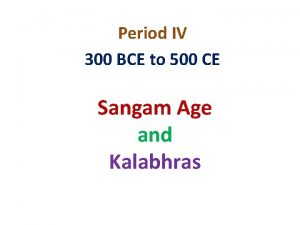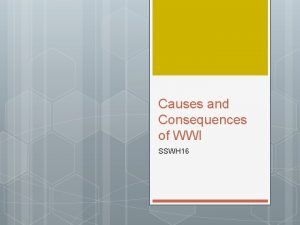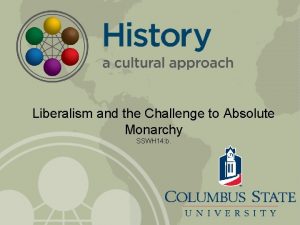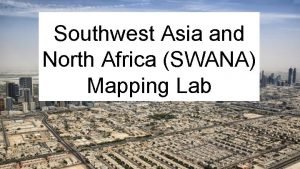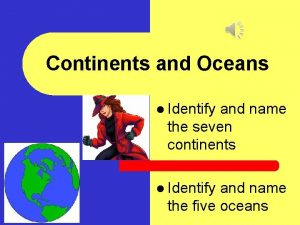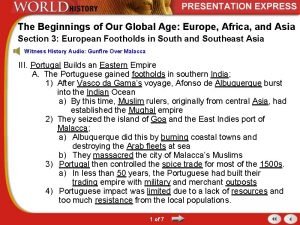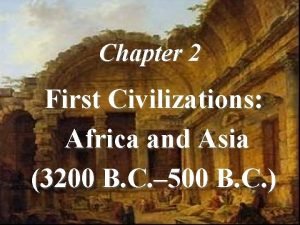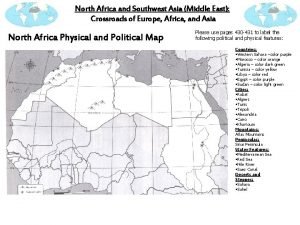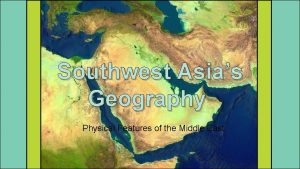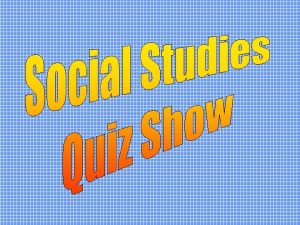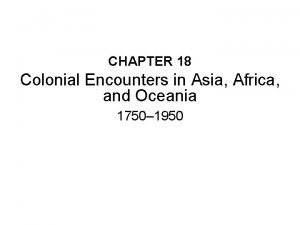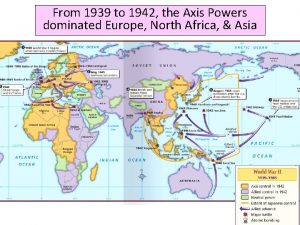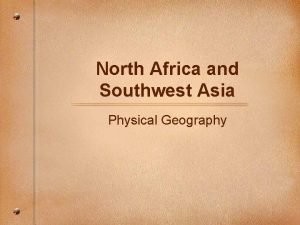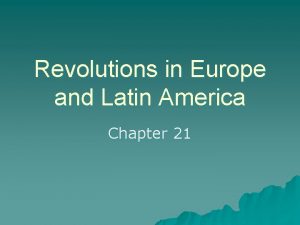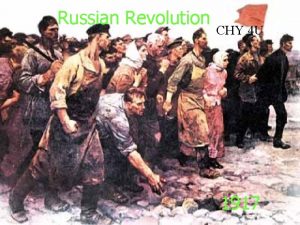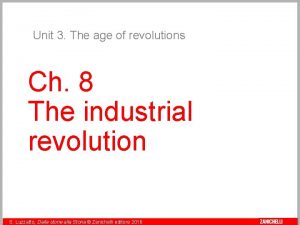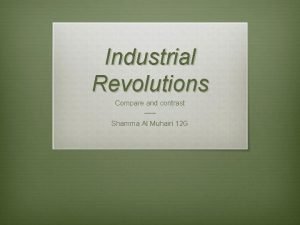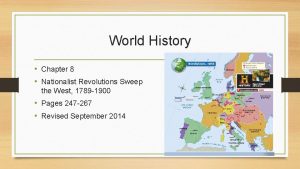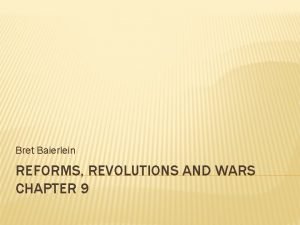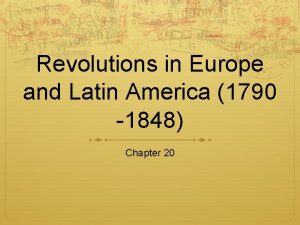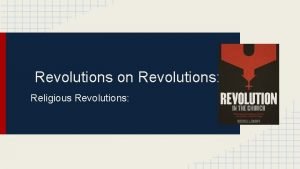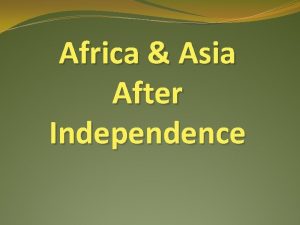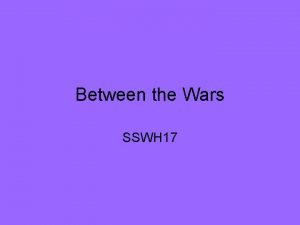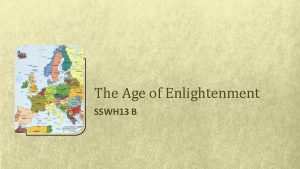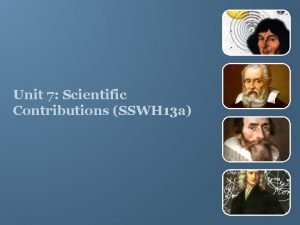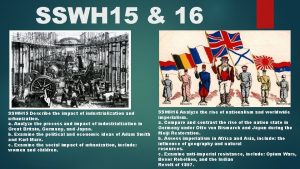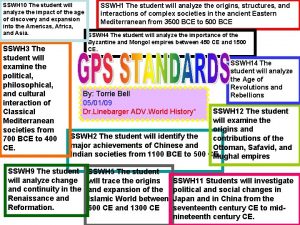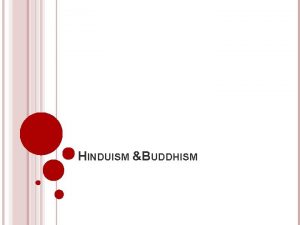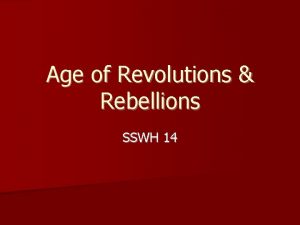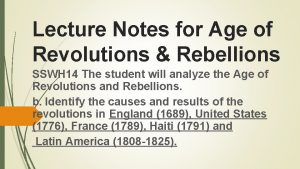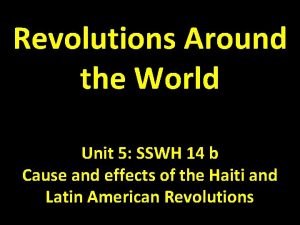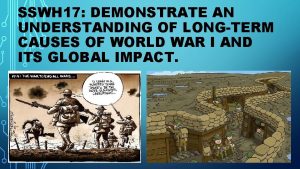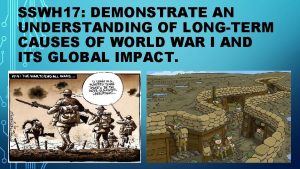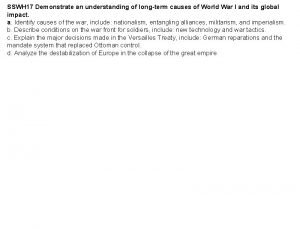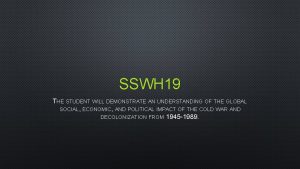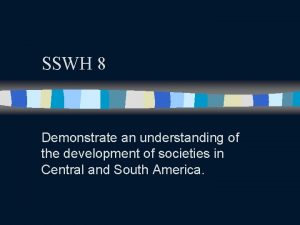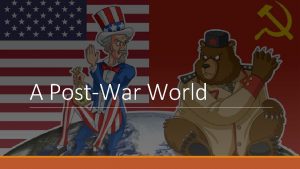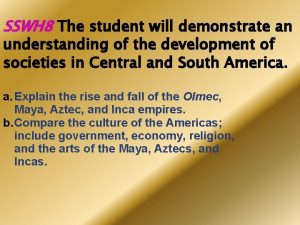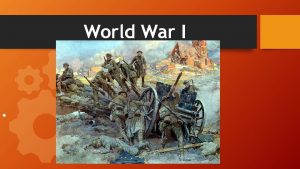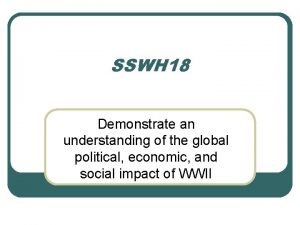Revolutions in Asia Africa SSWH 20 Demonstrate an





























- Slides: 29

Revolutions in Asia & Africa

SSWH 20 – Demonstrate an understanding of the global social, economic, & political impact of the Cold War & decolonization from 1945 to 1989 a. Explain the arms race, include: development of nuclear weapons, & efforts to limit the spread of nuclear weapons b. Describe the formation of the state of Israel & the Arab-Israeli Conflict c. Analyze the rise of nationalism & the revolutionary movements in Asia (i. e. India and China) & Africa d. Analyze opposition movements to existing political systems, include: antiapartheid, Tiananmen Square, & the fall of the Berlin Wall

Revolutions in India Late 19 th century – People of India began to push for independence from Britain ◦ demands grew louder following World War I During World War II, Mohandas K. Ghandi & the Indian National Congress started the Quit India movement in an effort to achieve immediate independence from the British The British treated this movement as a rebellion, jailed Ghandi & 60, 000 others Meanwhile, the Muslim minority wanted its own state, separate from the Hindus in India 1947 – British left India after dividing the Indian sub-continent into Hindu India & Muslim Pakistan ◦ British division of India was troubled from the start because Hindus & Muslims were often neighbors Following independence Hindus & Muslims turned on one another, the violence resulting in the death of nearly a million Muslims & 10 million more as refugees

Revolutions in India January 1948 – Hindu extremist assassinated Ghandi for his tolerance of Muslims Border clashes continued for decades in the Kashmir province on the border between India & Pakistan Other nationalist groups also wanted independence from India ◦ In the 1980 s, Sikhs in the Punjab province fought for self-rule, a movement that was put down by Prime Minister Indira Ghandi ◦ A few years later, the Tamil speaking Hindu minority in Sri Lanka also pushed for their own nation ◦ The Indian government similarly squashed the movement in Sri Lanka


Revolutions in China 1930 s – Civil war erupted in China between the Kuomintang Nationalist government headed by Chiang Kai-shek & the Communists led by Mao Zedong ◦ Both sides paused the civil war to fight together against the Japanese during World War II 1945 – the civil war resumed 1949 – The Nationalists’ policies eroded their popular support, leading to Communist victory ◦ Nationalist leaders fled to Taiwan Mao Zedong founded the People’s Republic of China


Revolutions in China 1953 – Mao began the 1 st Five Year Plan ◦ successfully increased agricultural & manufacturing outputs ◦ It was a violent campaign of land reform, however, that killed millions 1958 – Mao instituted the Great Leap Forward ◦ aimed to build on the first plan’s successes ◦ failed & resulted in millions of people dying of starvation in just a few years 1966 – Mao pushed forward with the Cultural Revolution ◦ a program of violent social change designed to rid China of anything from the “old way. ” ◦ After Mao’s death in 1976, moderates gained power, introduced elements of a market economy & led China to major economic growth

Revolutions in Africa – Gold Coast/Ghana Africans in the Gold Coast, a British colony, were the first to gain their independence Independence movement led by Kwame Nkrumah ◦ inspired by U. S. civil rights efforts, Marcus Garvey, & Mohandas Ghandi ◦ Africans held strikes and boycotts against the colonial power 1957 – achieved independence Nkrumah elected as the first prime minister Nkrumah changed the country’s name to an ancient African one, Ghana’s success provided more inspiration to other colonies


Revolutions in Africa – Kenya Jomo Kenyatta led a nonviolent fight for land in Kenya ◦ Kenya had a number of white settlers who owned the majority of the colony’s fertile land ◦ radicals turned to guerilla fighting The British labeled these radical fighters the Mau ◦ Thousands put into concentration camps ◦ Thousands more killed thousands 1963 – Kenyans achieved independence Elected Kenyatta as their first president


Revolutions in Africa – Rhodesia/Zimbabwe Southern Rhodesia was a self-governing British colony ruled by a small white minority This white minority claimed independence in 1965 in response to British pressure to govern by majority rule. Africans responded with guerilla tactics & successfully opened the government to African majority rule Southern Rhodesia became Zimbabwe Robert Mugabe, the most radical candidate, won the first free election in 1980 Mugabe instituted a one-party system limiting political freedom


Revolutions in Africa – French Colonies France anticipated that its colonies would become incorporated into France, but many Africans wanted their independence 1958 – France struck a deal that colonies like Senegal and Ivory Coast would be members of the French Community & France would remain in charge of foreign policy, but the colonies would have self-rule & would continue to receive French aid 1960 – French colonies received full independence In Algeria, the National Liberation Front fought using guerrilla warfare from 1954 to 1962, when it finally won its independence from France


Revolutions in Africa – Congo Belgium had no intention of letting go of its colonies & did nothing to transition them toward independence As a result, when the Congo was thrust into sudden independence in response to violent protests, civil war ensued 1965 – army general Mobutu took control and built a brutal dictatorship that lasted over 30 years


Revolutions in Africa – Portuguese Colonies African nationalists fought long wars against Portugal held onto their colonies until 1974 when the military took over in Portugal & pulled out of Africa Guinea-Bissau, Angola, & Mozambique were hurled into independence without a good foundation for either their governments or their economies


Revolutions in Africa – South Africa 1910 - South Africa achieved self-rule ◦ white minority held all political & economic power 1948 – Afrikaner National Party, made up of Dutch descendants, instituted apartheid, a rigid system of racial segregation designed to maintain white power The African National Congress (ANC) organized protests ◦ banned by the government in 1960 For the next three decades, South Africa helped white minorities in neighboring countries maintain their power as well 1989 – President F. W. de Klerk recognized the need for reform ◦ ended apartheid & the ANC ban

Resistance Movements In Asia & Africa

Anti Apartheid 1948 - In response to apartheid laws instituted by the white Afrikaner National Party, the African National Congress organized acts of peaceful civil disobedience ◦ The government responded to one such march by shooting & killing more than 60 peaceful demonstrators in Sharpeville ◦ After this, the ANC & Nelson Mandela embarked on a more violent course of action ◦ The government banned the ANC in 1960 & arrested Mandela in 1964, but he remained a popular symbol of protest Archbishop Desmond Tutu & others continued the fight from within & outside of South Africa Many South African whites also joined the movement 1976 – police shot black school children who were protesting, leading to riots across the country

Anti Apartheid 1980 s – South African government made small concessions, but Black Africans were still excluded from politics & segregated in civil life 1989 – President F. W. de Klerk instituted reforms that legalized the ANC, ended apartheid, & freed Mandela from prison ◦ This, however, was not enough to end the violence in the nation 1994 – first multi-racial election was held ◦ South Africans elected antiapartheid leader Nelson Mandela as president


Tiananmen Square During the 1980 s, when moderates controlled the government following Mao’s death, many Chinese argued for more political freedom and economic reforms This movement culminated in Tiananmen Square in Beijing Hundreds of thousands of protesters filled the square for weeks calling for democracy Students staged a hunger strike, & others built barricades The government sent in troops & tanks, which finally broke through the barricades & began to fire on the protesters killing or wounding thousands Many more were arrested Through this show of force, the government maintained tight control & demonstrated the limits of the reforms it was willing to make


Berlin Wall 1961 – Communists built a wall of concrete & barbed wire in East Berlin along its border with West Berlin They built and patrolled the wall to keep East Germans from escaping to the West, shooting anyone caught trying to cross over The wall became a symbol of a divided Europe &, in fact, a divided world As the Soviet system began to fall apart in the late 1980 s, protests in East Germany convinced the government, which no longer had Soviet backing, to open the borders 1989 - Germans on both sides of the wall, tore down the wall, which has since become a symbol of the collapse of communism.

 Chera chola pandya history
Chera chola pandya history Sswh
Sswh Sswh tax meaning
Sswh tax meaning Swana political map
Swana political map North africa and southwest asia physical geography
North africa and southwest asia physical geography Continents and oceans names
Continents and oceans names European imperialism in africa and asia webquest answers
European imperialism in africa and asia webquest answers Political map of north africa and southwest asia
Political map of north africa and southwest asia European footholds in the eastern hemisphere
European footholds in the eastern hemisphere Is egypt in africa or asia
Is egypt in africa or asia Colonial encounters in asia africa and oceania
Colonial encounters in asia africa and oceania Is israel in africa or asia
Is israel in africa or asia Southwest asia and north africa physical map
Southwest asia and north africa physical map Inlet of indian ocean between africa and asia
Inlet of indian ocean between africa and asia Inlet of indian ocean between africa and asia
Inlet of indian ocean between africa and asia Country uniting africa and sw asia
Country uniting africa and sw asia Chapter 18 colonial encounters in asia and africa
Chapter 18 colonial encounters in asia and africa Who dominated europe, north africa and asia from 1939-1942?
Who dominated europe, north africa and asia from 1939-1942? North africa and southwest asia mountains
North africa and southwest asia mountains Asia europe south america
Asia europe south america Revolutions in europe and latin america section 2 quiz
Revolutions in europe and latin america section 2 quiz A tale of two revolutions grade 10, 1080l
A tale of two revolutions grade 10, 1080l Zanichelli
Zanichelli Europe faces revolutions
Europe faces revolutions First agricultural revolution ap human geography
First agricultural revolution ap human geography First and second industrial revolutions
First and second industrial revolutions Chapter 8 nationalist revolutions sweep the west
Chapter 8 nationalist revolutions sweep the west Wars revolutions and reforms
Wars revolutions and reforms Revolutions in europe and latin america
Revolutions in europe and latin america Building revolutions
Building revolutions
